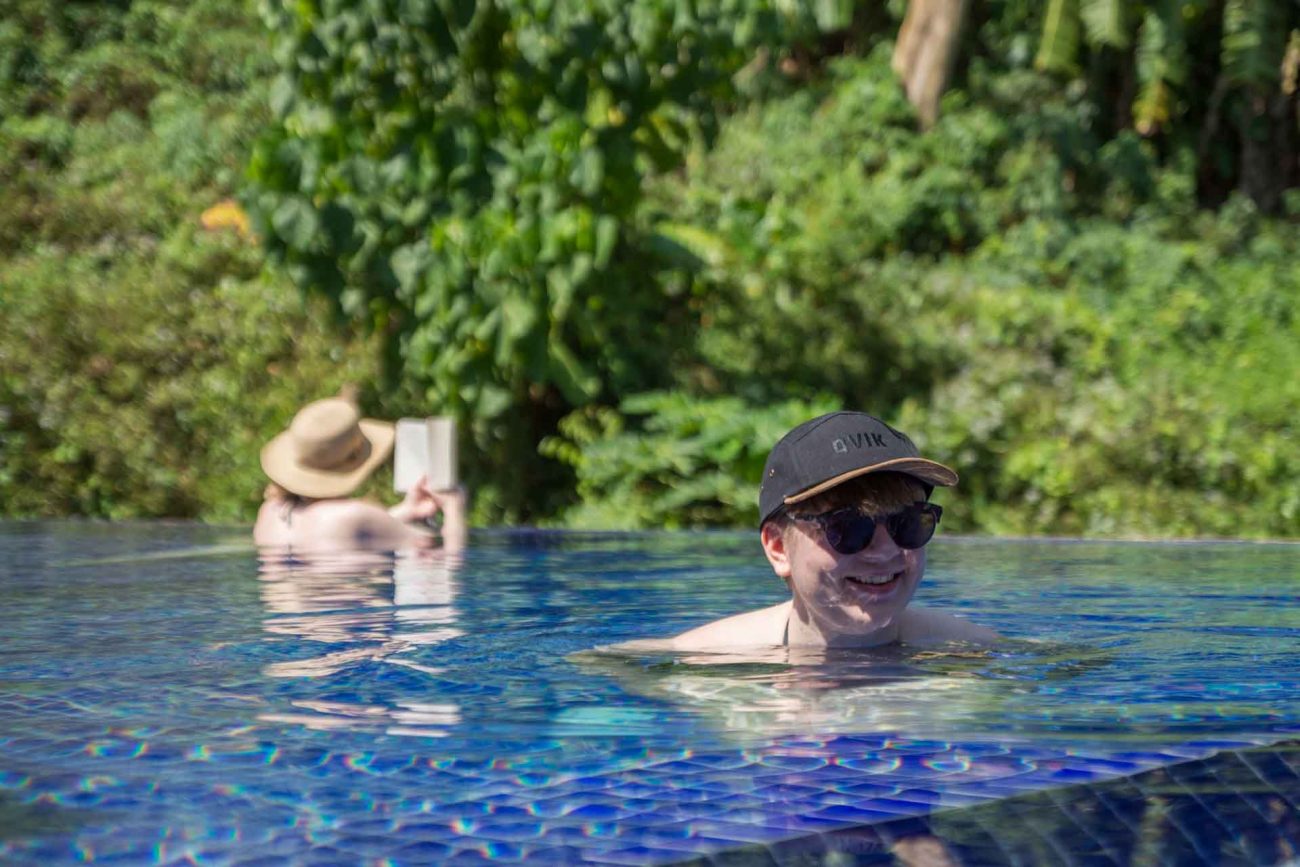
Escape from the cold – remote work in Thailand
I spent the first weeks of February working in unusual surroundings. Here are some of my experiences of remote work in Phuket, Thailand.
This year, Qvik offered all of its employees the opportunity to work remotely from Phuket. People were free to choose the time and length of their stay according to their workload. In other words, if you could come to an agreement with your projects and customers, you could spend the most depressing winter months, from January to March, in the tropics.
When the hype for our remote office villa in Thailand started building last year, the decision to go was not hard to make. In the end, I opted for a shorter stay and worked for two weeks in Nai Harn, Southern Phuket.
Creating an advance schedule for remote work turned out to be tricky, but the actual planning of work was pretty much the same as when your work partner takes a holiday and you have to draw up a detailed to-do list. Before I went, I agreed with the customer and my partner on the things I could work on independently. Challenging design issues that would cause too many questions were pushed back on the agenda.
Due to the time difference, we decided to see about my participation in meetings (dailies included) on a case-by-case basis. In most cases, it was enough to report on my progress via text chat instead of the usual conference calls.
Remote workplace in the tropics – crazy nights and lazy days?
Offering remote work opportunities in exotic locations (and by that I don’t just mean Turku) is a growing trend in Finnish IT companies. I’m sure many people suspect that it’s nothing more than a gimmick to reel in potential recruits. Is there an actual benefit to this kind of remote work?
I have never felt the need to escape the cold to southern resorts myself, and this trip to Thailand was the first of its kind for me. But I got to admit it: after the jet lag had dissipated and I started getting used to the fact that a T-shirt and shorts were too much to wear, the sun blazing in the cloudless sky and the daily temperatures of 31 degrees centigrade started to feel quite nice.
The clear-cut difference between day and night helped me get up early and work efficiently in the evenings when it was dark and I didn’t bother going out anymore. On returning to Finland, I felt much more alert, like I had returned from a long summer vacation loaded up on vitamin D.
There were downsides too, though. Because of the absence of my partner, I often ran into dead ends that were difficult to resolve through chat alone. The time difference made me feel like I was always having lunch at the wrong time and was most efficient when everyone else was still snoring in Finland. On top of that, the heat sapped my energy, especially during the first week – it would have been much nicer to just loll in the pool than sweat over presentation slides indoors.
My regular work routines kept me in Phuket during the week, and I only got to explore the beaches of the island paradise on weekends. In other words, I was just as eager to see Friday as I am back here.
Would I do it again next year?
Could I do remote work in far-off lands every year? I can’t see why not. The second time would probably be easier in many ways. I would rest more on travel days and be more disciplined when the call of the pool gets too much to bear.
Working remotely for several weeks is not ideal in team projects, even if you do manage to get your job done. Remote work is arranged on the terms of the customer, and anything more than a few weeks would require the whole team to go. Maybe next time I could persuade the customer to come along with the rest of the team?
Even though I had my work boots firmly on for my stay in Thailand, I wouldn’t trade it for anything. The memories of warm summer nights and hot Thai food are particularly fond now, when it’s a modest 45 degrees colder in Helsinki than it was in Phuket.


